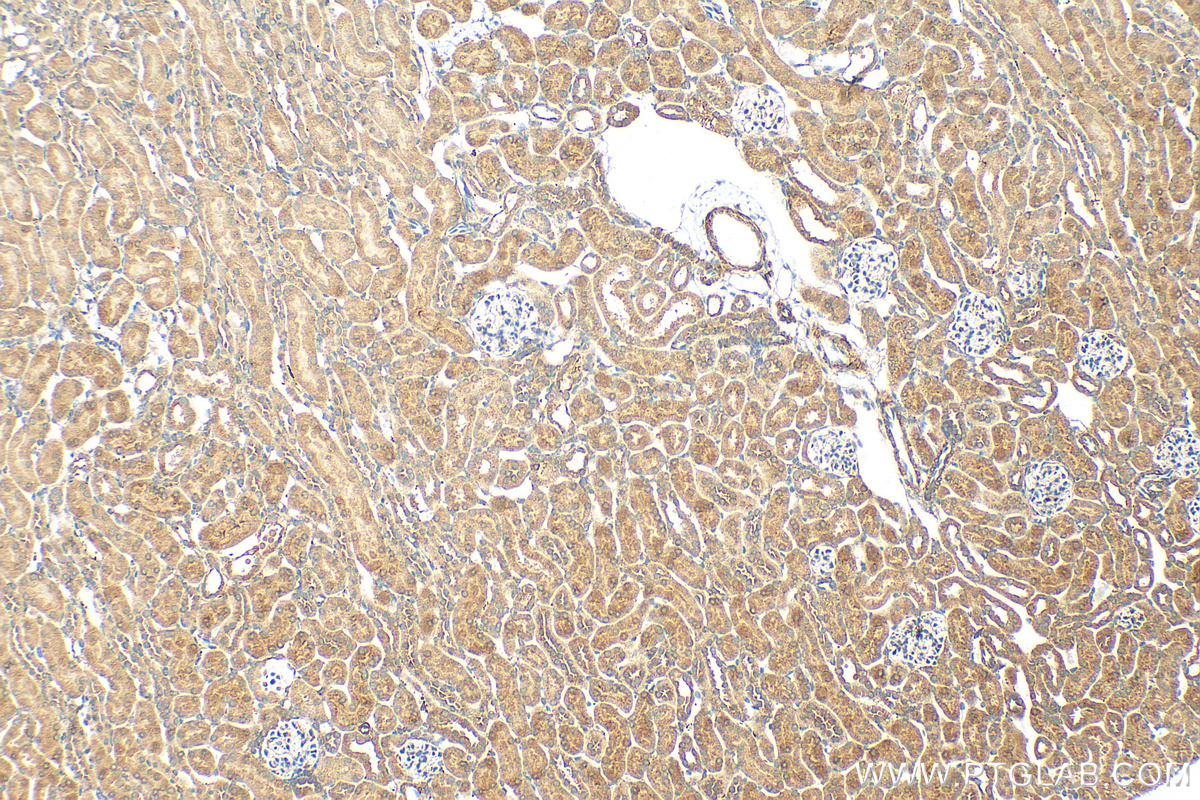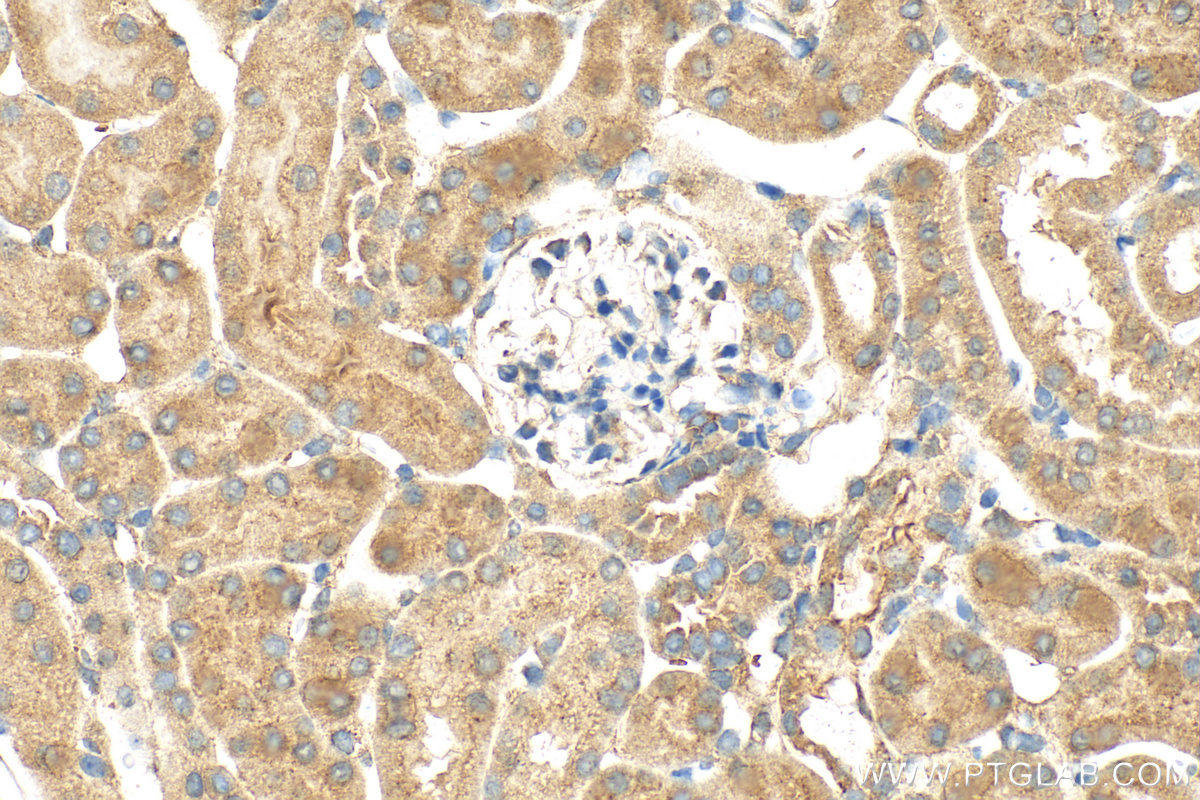验证数据展示
经过测试的应用
| Positive IP detected in | HEK-293 cells |
| Positive IHC detected in | mouse kidney tissue Note: suggested antigen retrieval with TE buffer pH 9.0; (*) Alternatively, antigen retrieval may be performed with citrate buffer pH 6.0 |
推荐稀释比
| 应用 | 推荐稀释比 |
|---|---|
| Immunoprecipitation (IP) | IP : 0.5-4.0 ug for 1.0-3.0 mg of total protein lysate |
| Immunohistochemistry (IHC) | IHC : 1:50-1:500 |
| It is recommended that this reagent should be titrated in each testing system to obtain optimal results. | |
| Sample-dependent, Check data in validation data gallery. | |
产品信息
31283-1-AP targets FNIP2 in IP, IHC, ELISA applications and shows reactivity with Human, Mouse samples.
| 经测试应用 | IP, IHC, ELISA Application Description |
| 经测试反应性 | Human, Mouse |
| 免疫原 | FNIP2 fusion protein Ag35014 种属同源性预测 |
| 宿主/亚型 | Rabbit / IgG |
| 抗体类别 | Polyclonal |
| 产品类型 | Antibody |
| 全称 | folliculin interacting protein 2 |
| 别名 | FNIP2, FNIPL, KIAA1450, FNIP1 like protein |
| 观测分子量 | 125 kDa |
| GenBank蛋白编号 | BC166693 |
| 基因名称 | FNIP2 |
| Gene ID (NCBI) | 57600 |
| RRID | AB_3669929 |
| 偶联类型 | Unconjugated |
| 形式 | Liquid |
| 纯化方式 | Antigen affinity purification |
| UNIPROT ID | Q9P278 |
| 储存缓冲液 | PBS with 0.02% sodium azide and 50% glycerol , pH 7.3 |
| 储存条件 | Store at -20°C. Stable for one year after shipment. Aliquoting is unnecessary for -20oC storage. |
背景介绍
Folliculin (FLCN)-interacting proteins 1 and 2 (FNIP1, FNIP2) are homologous binding partners of FLCN, a tumor suppressor for kidney cancer. FNIP2 was found to bind to the C terminus of FLCN and to AMPK, like FNIP1. FNIP2 competes with the activating co-chaperone AHSA1 for binding to HSP90AA1, thereby providing a reciprocal regulatory mechanism for chaperoning of client proteins (PMID: 18403135).
实验方案
| Product Specific Protocols | |
|---|---|
| IHC protocol for FNIP2 antibody 31283-1-AP | Download protocol |
| IP protocol for FNIP2 antibody 31283-1-AP | Download protocol |
| Standard Protocols | |
|---|---|
| Click here to view our Standard Protocols |


